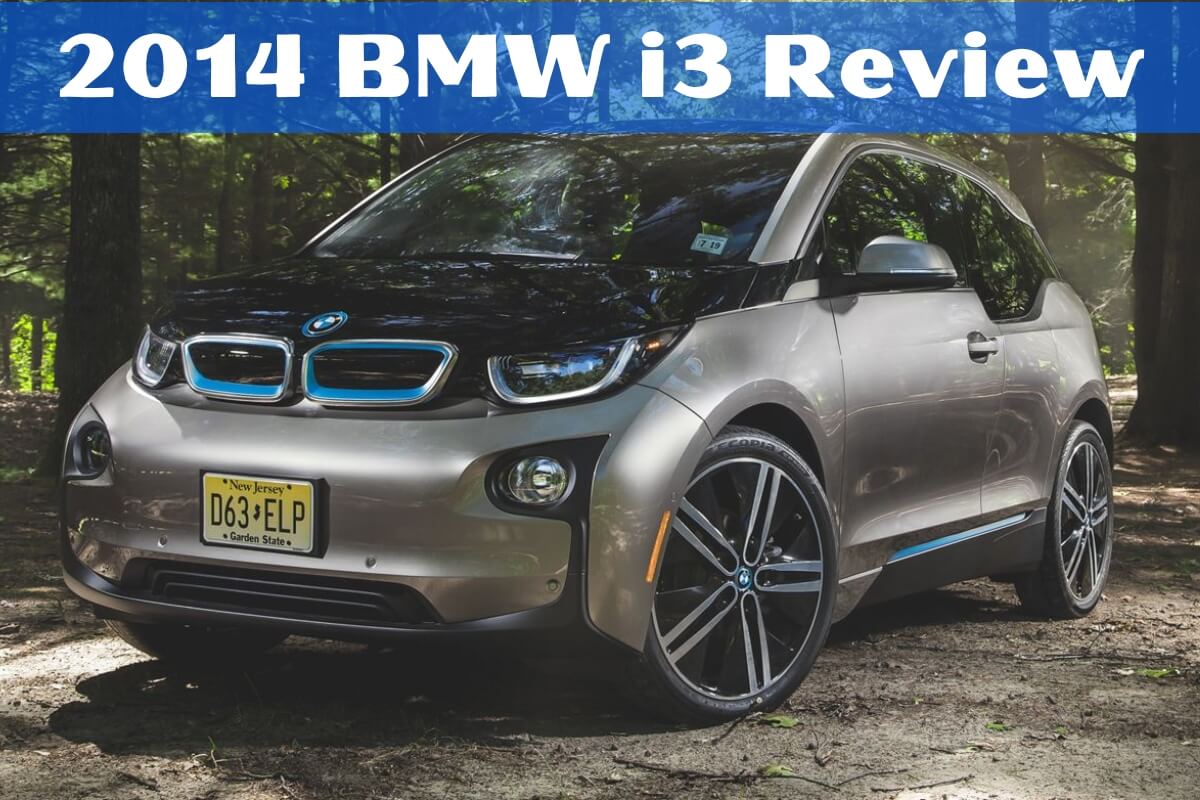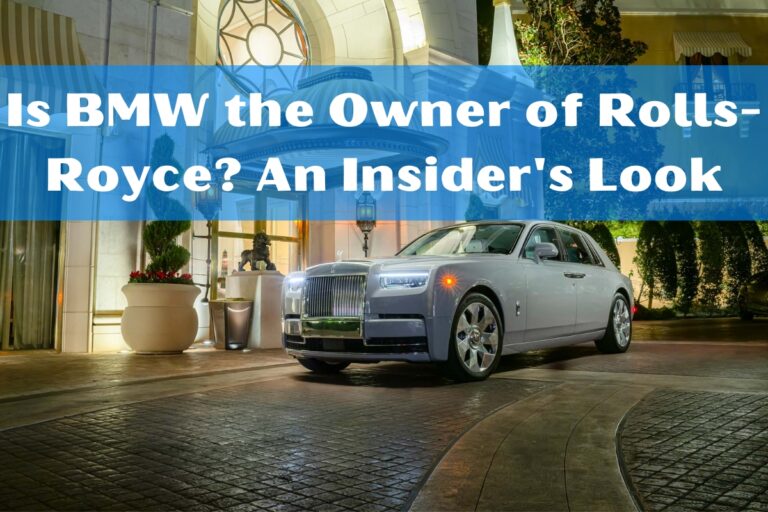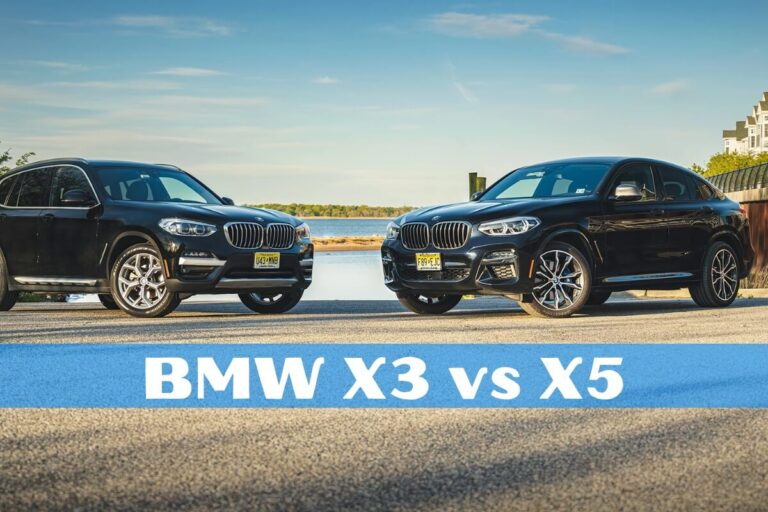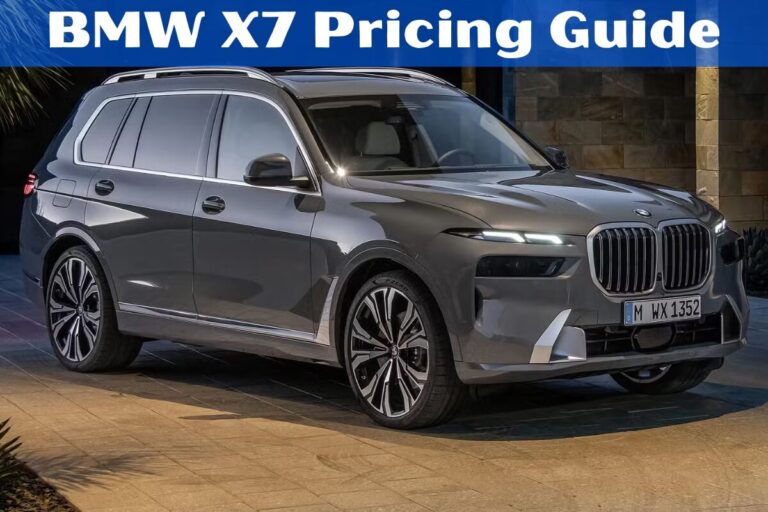2014 BMW i3 Review: BMW’s Quirky, Innovative EV Pioneer

BMW stunned the automotive world in 2014 by releasing the i3 – their first ever fully electric production vehicle and a bold first step into sustainable mobility. As legacy automakers raced to catch up to Tesla’s electric dominance, the i3 represented BMW’s unconventional vision for premium electric driving. But how did this quirky, futuristic EV actually stack up in the real world?
The 2014 BMW i3 was a flawed but innovative urban runabout that pushed the boundaries of eco-conscious design and electrification, even if it fell short in some key areas like range and practicality. It drove with proper BMW agility, sported a wonderfully modern interior, and featured groundbreaking lightweight engineering – for a price.
This in-depth review will cover everything you need to know about the i3, including its unique exterior and interior design, electric powertrain performance, driving dynamics, range and charging, pricing and trim levels, safety ratings, and the pros and cons of BMW’s first mass-produced EV.
BMW dubbed the i3 as the first vehicle “Born Electric” when it arrived for the 2014 model year. Unlike many EVs converted from existing gasoline platforms, the i3 represented a blank slate approach to maximize the potential of electrification.
At its core was an aluminum chassis married to an innovative passenger cell made from carbon fiber reinforced plastic (CFRP). This extremely lightweight and rigid construction pioneered mass production techniques for carbon fiber that have since proliferated throughout the industry.
The electric powertrain consisted of a rear-mounted 170 horsepower electric motor driving the rear wheels through a single-speed transmission. A 22 kWh lithium-ion battery pack provided power, giving the i3 an EPA-estimated range of 81 miles.
Exterior Design and Styling
Before we get into evaluating how the 2014 i3 drove and performed, it’s impossible to ignore its outlandish, futuristic exterior design that polarized opinions. BMW threw out the conventional car styling playbook for something drastically different and aerodynamic.
The tall, narrow body maximized interior space within a compact footprint similar to the small BMW 1 Series. Short overhangs and a rounded nose further enhanced aerodynamics. Unique design touches included rear “coach” doors that opened backwards after the fronts, black accent panels, and extensive use of lightweight plastics and composites.
Many praised the daring, avant-garde look as a harbinger of bold new thinking for electrics and sustainable mobility. Others saw the awkward styling as a compromise too far for such a premium brand.
Interesting Exterior Design Fact:
The 2014 i3 featured rear “coach” doors that opened backwards after the front doors for improved interior access despite the small footprint.
Interior Space, Design and Quality
If the exterior design was divisive, reviews of the i3’s interior were far more positive. BMW created an ultra-modern cabin befitting the advanced electric powertrain with innovative use of sustainable and recycled materials.
Open the rear coach doors and you’ll find a roomy interior with space comparable to BMW’s 3 Series sedan despite the much smaller footprint. Lightweight engineering maximized interior packaging.
The instrument panel featured crisp digital displays “floating” via an aluminum sustaining tube housing. Extensive recycled plastics and fibers were used throughout, giving a premium yet eco-friendly ambiance that still looked and felt appropriately upscale for BMW.
Front seats provided ample room and comfort, while the rear had sufficient space for two adults despite the relatively compact exterior dimensions. Fold-flat rear seats also allowed impressive cargo versatility, even if absolute capacity was tight.
Electric Powertrain and Performance
Under the i3’s lightweight bodywork sat one of BMW’s most advanced powertrains to date – a 170 horsepower electric motor mounted at the rear axle for ideal weight distribution. With an eager 184 lb-ft of torque available instantly, the i3 could sprint 0-60 mph in under 7 seconds which was rapid acceleration for 2014.
Despite the featherweight carbon fiber construction, the i3 felt quick and responsive with linear electric acceleration and minimal body roll through corners. Rear-wheel drive and a low center of gravity aided driving dynamics.
The top speed was electronically limited to just 93 mph when Eco Pro mode was engaged to preserve range. But you could override this ceiling for short full acceleration bursts by kicking down the accelerator.
How far can the 2014 i3 go on a charge?
In EPA testing, the standard 2014 i3 was rated for 81 miles of range. In real-world mixed driving, owners typically saw 70-100 miles from the 22 kWh lithium-ion battery depending on driving conditions.
While adequate for urban commuting, this range fell far short of many modern EVs and helped spark the dreaded “range anxiety” that plagued early electric adoption. BMW offered a Range Extender model with a small gas engine to roughly double the driving distance.
Driving Impressions and Handling
Despite futuristic powertrain and construction, the 2014 i3 felt immediately familiar and reassuring from the driver’s seat thanks to proper BMW driving dynamics.
The lightweight carbon fiber chassis felt nimble and agile for urban environments, with precise steering and a planted, composed ride despite the tall sidewall tires necessitated by the short overhangs and narrow track.
With minimal body roll and quick reflexes, the i3 tackled twisty roads eagerly. Just don’t expect tire-smoking, tail-out antics as the rear-wheel drive configuration was tuned more for efficiency than outright performance.
Where the i3 truly shined was in stop-and-go city traffic thanks to aggressive regenerative braking. BMW engineered the system for extreme regen when lifting off the accelerator pedal. With practice, you could drive in dense traffic using just the go pedal and regen braking, seldom tapping the physical brakes.
Charging and Range Extender Option
As a pure battery electric vehicle, the 2014 i3 could charge using Level 1 (120V household outlet) or Level 2 (240V). Upgrading to a Level 2 home charger was recommended to keep charge times reasonable at around 3-4 hours.
BMW also offered an optional DC fast charging system that could charge the battery to 80% in just 30 minutes, ideal for roadtrips or quick top-ups.
Those put off by the i3’s limited 81 mile EPA range had the choice of the Range Extender (REx) model. This added a small 650cc two-cylinder gasoline engine acting as a generator to provide charge to the battery pack once it was depleted.
In range extender mode, the 2014 i3 REx could travel up to 150 miles depending on driving before requiring a recharge or refueling stop. However, performance suffered as the gas generator struggled to fully power the electric drivetrain. 0-60 mph times degraded to over 13 seconds when operating on the range extender alone.
Trim Levels and Pricing
The 2014 BMW i3 was offered in three primary trim levels in both pure electric and Range Extender configurations:
- Mega World
- Giga World
- Tera World
Well-equipped even in base Mega World trim, prices started around $42,000 before federal and state EV incentives were applied. The REx models carried around a $3,800 premium.
While no bargain, the i3 undercut other premium EVs like the Tesla Model S. But it was significantly more expensive than mainstream options such as the Nissan Leaf.
Federal tax credits of $7,500 plus additional state incentives could bring the effective purchase price below $30,000 for many buyers to offset the premium over gas-powered compacts or more affordable used EVs.
Safety Ratings and Features
The 2014 i3’s innovative carbon fiber reinforced plastic (CFRP) passenger cell provided a rigid safety structure while keeping weight low. Aluminum crumple zones at each end added further crash protection.
Both the NHTSA and IIHS gave the i3 strong ratings in most categories, though it missed Top Safety Pick status from IIHS.
Beyond the sturdy construction, BMW equipped the i3 with all expected safety features including multiple airbags, stability control, and available active safety tech like forward collision warning, pedestrian detection, and automatic emergency braking.
Is the BMW i3 safe?
Overall, the 2014 i3 held its own in safety tests thanks to innovative lightweight engineering and available active safety systems. It missed top ratings but met premium compact car standards during this era.
Pros and Cons of the 2014 BMW i3
Like any vehicle, the i3 had its strengths and weaknesses. Here’s a look at some of the key pros and cons to consider:
Pros:
- Quick acceleration thanks to electric torque, 0-60 mph in under 7 seconds
- Responsive handling with agile steering and composed ride
- Spacious, upscale interior with sustainable, premium materials
- Cutting-edge lightweight engineering with carbon fiber chassis
- Available range extender reduced range anxiety for some buyers
- Qualified for federal/state EV incentives to offset higher pricing
Cons:
- Polarizing exterior styling was too avant-garde for many
- Limited 70-100 mile real-world range in most conditions
- More expensive than mainstream EVs like Nissan Leaf
- Tight cargo capacity of just 11 cubic feet behind rear seats
- Range extender hampered performance when running on gas
- Rear coach doors had mixed usability depending on situation
Even with the drawbacks, the 2014 i3 represented an intriguing and innovative step into sustainable mobility for BMW. It drove with proper sporting dynamics expected of the brand while packaging cutting-edge electrification and lightweight technologies.
In Conclusion
There’s no question the 2014 BMW i3 pushed boundaries as BMW’s first serious electric vehicle entry. While flawed in some respects like limited range and polarizing exterior design, it set the stage for more mainstream EVs to follow from legacy brands.
The i3 showcased just how compelling an electric powertrain could be in terms of straight-line performance, handling poise, and quiet operation – especially when packaged in an ultra-lightweight carbon fiber chassis. It felt genuinely premium and distinctly BMW behind the wheel.
At the same time, pricing kept it somewhat of a niche player, costing substantially more than mainstream EV options while not quite reaching into the premium space occupied by top-shelf EVs like the Tesla Model S. The range extender option muddied the i3’s identity by adding gas power.
Ultimately, the 2014 i3 made a statement that BMW could bring electric mobility to the masses without sacrificing brand character and performance. Just a few years later, more refined and mass-market EVs would arrive from legacy brands taking cues from the i3’s pioneering advantages and learning from its missteps.
It may have been an acquired taste, but the BMW i3 pressured the industry to embrace electrics with compelling premium options. That influence alone made it one of the most significant new vehicle launches of 2014.





